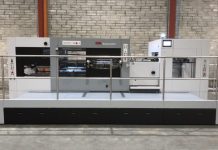Cast or machined vehicle parts cannot match the strength of forged car parts. Forgings are the best when it comes to strength and dependability. Forged items now come in a wider range of shapes, sizes, and performance levels to accommodate demanding design and performance specifications due to advancements in forging technology.
Forgings are frequently chosen for important automotive components where durability, strength, dependability, cost, impact resistance, and fatigue resistance are important factors. The necessary level of high or low-temperature performance, flexibility, hardness, and workability is provided by forged materials.
It would be hard to describe all the applications that manufacturers have discovered for forged goods because forging has been around for millennia and has been continuously becoming better over time. Forged parts are often used in home workshops, large pipeline fittings, agricultural machinery parts, and spaceship components. Here we are going to discuss certain advantages of forging car parts and how essential the forging will be.
Positive Attributes Of Forging Car Parts
Forging has a vital feature of metal shaping as it has various advantageous and valuable attributes. Forging is used to create durable, dependable parts for machinery, engines, and technological equipment that function at their best under any circumstances. Because of the positive and advantageous performance of forged parts, manufacturers and producers rely on forging to supply the components for their products.
Directional Strength
Forging produces metallurgically sound metal with outstanding mechanical characteristics through controlled deformation. Pre-working the metal before using it in the forging process results in the right grain flow and directional qualities of strength, ductility, and resistance to impact and fatigue, which cause this factor.
Design’s Flexibility
Because engineers and designers are aware of how forging impacts the grain flow and make designs resistant to fatigue and failure, they are able to produce parts with increased strength as they work on their conceptualizations. Forging enhances mechanical strength, resilience, and impact resistance by enabling designers to select the ideal materials and heat treatments for each component.
Resistant To Durability
Other methods of metal fabrication expose the ends of the grain flow lines, which makes the metal more susceptible to corrosion and wear. The grain flow is maintained during the forging process so that it conforms to the shape and contour of the component or part. Forged items provide better fatigue and corrosion resistance because the grain flow is maintained.
Variation In Thickness
Because the strength-to-weight ratio is higher during the forging process, pieces can have different thicknesses. Shortening manufacturing runs and reducing production costs are all benefits of being able to mass-produce parts utilizing a single process that can handle different thicknesses. No matter the material, the flow of the material from one forging to the next is constant.
Rate Of Production
The high forging production rates are very advantageous to the automotive industry. In the cold forging procedure, metals enter the forging process, and pieces emerge quickly and effectively in a matter of seconds. Due to the delay in heating the metals, the time required for hot forging increases to minutes. No matter the part, the forging process may be easily and affordably incorporated into already-running manufacturing processes.
Strength
The strength that forging gives finished products is its main advantage. This is due to the metal’s ability to keep its grain alignment and structure during the forging process. Preprocessing and reworking the metals eliminates any worries about impurities that can weaken or damage a component. Metals recrystallize flawlessly because any potentially dangerous impurities have previously been eliminated.
Last Wording
Although forging has altered due to technical developments and the creation of new metals, it still largely retains its basic shape. The majority of societal demands require parts, and modern forging produces these parts using a wide range of technical techniques and powerful machinery. Forging produces metallurgically sound metal with outstanding mechanical characteristics through controlled deformation.















